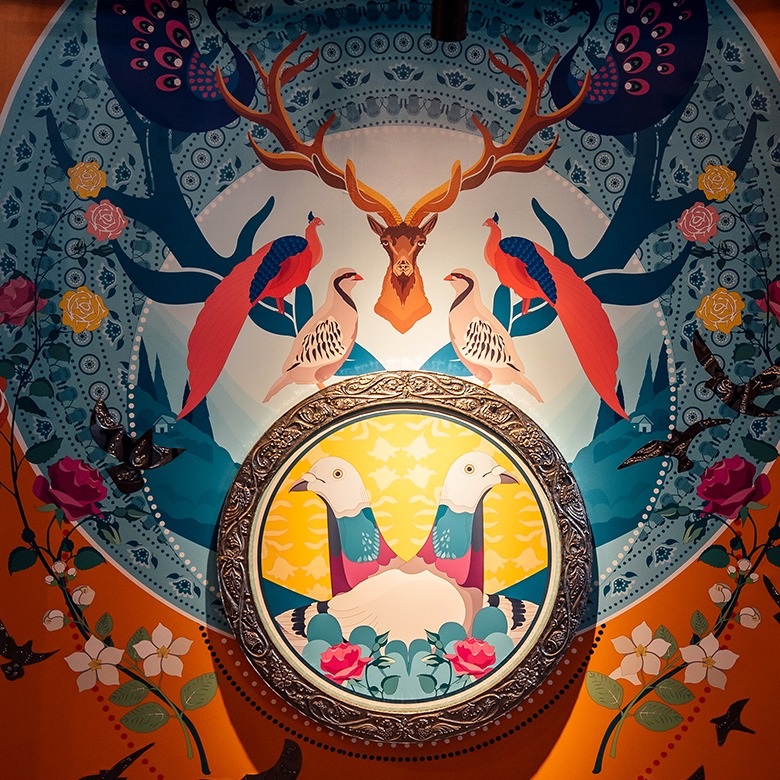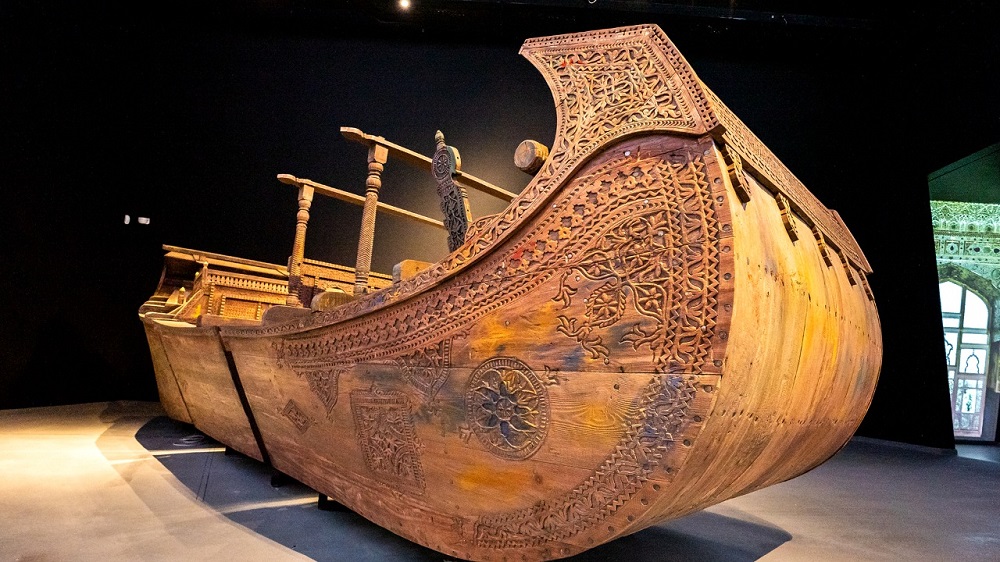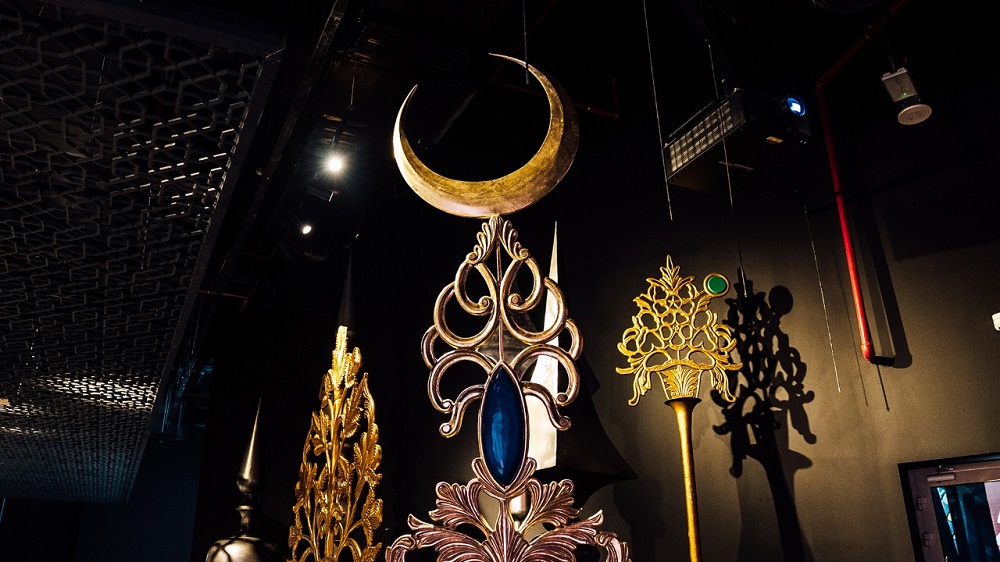Written by: Haroon Shuaib
Posted on: October 12, 2021 |  | 中文
| 中文
Ustad Rafaqat Ali
Since the global event opened on 1st October 2021, the kaleidoscopic Pakistan pavilion at Expo 2020 Dubai has been getting a lot of attention. For 170 years, world expos have showcased the greatest innovations, from the first live TV broadcast at the New York World’s Fair in 1939 to Seattle Century 21 Exposition in 1962. At the Seattle Expo visitors were stunned by an early computer responding to vocal command. The unveiling of Eiffel Tower at the Exposition Universelle de Paris 1889 to the world’s largest unsupported dome forming centerpiece of Expo 2020, the rich legacy of these expositions continues to grab attention of the world.
Dubai Expo, initially planned for last year, had to be delayed to this year because of the pandemic, and is the first expo of the series being held in the Middle East, Africa and the South Asian region. Continuing the tradition, Dubai Expo 2020 showcases latest technology, advancements, and mankind’s cultural zeitgeist. The Expo is divided into three districts around the themes of sustainability, mobility and opportunity, with representation from 192 countries. Pakistan’s pavilion is a highlight of the opportunity district, sitting prominently on the Sunset Avenue. Themed as ‘Hidden Treasure’, Pakistan’s pavilion showcases unexplored and undiscovered riches of the country. Constructed with a cost of $28.72 million, the pavilion attracted over 8,000 people on the first day. The Expo was formally inaugurated by the President of Pakistan, Dr. Arif Alvi, on October 9, 2021, coinciding with the 50 years of establishment of diplomatic relations between Pakistan and the UAE. Elaborating on the vision behind the pavilion, the President said, “It (Dubai Expo 2020) is the perfect venue for us to reach out to the larger global audience to attract foreign investment in different sectors, including renewable energy, mineral resources, real estate, engineering, information technology, agriculture and tourism. Our active presence in Expo 2020, Dubai also signifies our renewed focus on geo-economics.”
The pavilion, divided into eight spaces, projects archaeological treasures, handicrafts, natural resources, tourist sites, food, culture, music and art from the country. One section is dedicated to how Pakistan is combating climate change, and displays information and art installations related to the government's Billion-Tree Tsunami project. Official soundtrack of the pavilion ‘Lala-e-Sehrai’ (Flower of the Desert) has been produced by music maestro Rohail Hyaat in the traditional afternoon Raag Bhimplasi, and depicts a journey from classical to folk and then Qawali.

Inspired by truck art, a beautiful wall painting from the food court area of Pakistan Pavilion at Dubai Expo
Talking to Youlin from Dubai, principal curator of the Pakistan Pavilion, Noorjehan Bilgrami, a multi-disciplinary artist, curator, and educationist and the force behind Koel Art Gallery said, “Basically my inspiration is the history and diversity of Pakistan’s landscape, its people, the cultures and religions that have been coexisting, our youth, what is currently happening there, and the passion that we have as a nation. It is such an energetic, alive, talented and precious land that we have – all that is my inspiration while setting up this pavilion.” From showcasing the incredible craftsmanship inspired by the Seesh Mahal (Glass Palace) of Lahore Fort, to the hand-built vessel inspired by the southern Mohana tribe of Sindh; live folk musicians of Balochistan to the unique miniature artwork created by the exceptional artist Navid Sadiq narrating the journey of Pakistan’s origins from Mehrgahr 7000 BCE onwards to 1947 as a timeline, there is a lot to cherish.

A typical wooden houseboat, used by the Mohana tribe of Sindh since ages, with its beautiful carving details
One of the distinct features of the Pakistani pavilion is its stunning exterior comprising of 24,000 glass pieces in different hues, each a unique piece. Rashid Rana, the artist behind the façade titled, ‘Unity of All that Appears’, describes it as perhaps one of the most exciting and challenging projects of his career, requiring him to transform architecture into art. ‘The magic, perhaps, lies in the fact that each of these individual units, thousands of them, look similar but all of them are unique, fractionally different from each other in terms of the color and size, and the viewer gets multiplicity of views as they walk around it,’ Rashid explains.

Created by Affan Baghpati, ‘Sacred Spaces’ section at the Pavilion highlights peaceful coexistence of Islam, Christianity, Hinduism and Zoroastrianism
Speaking about the pavilion, Saqlain Bangash, owner of a Gulf-based business, Fine City Landscapes said, “As a Pakistani running my own business, and on behalf of so many other Pakistanis working in the Gulf and sending remittances to our country, I must say that we are truly proud of this pavilion. It is extraordinary and will introduce the country as a viable investment and tourism destination. It will also help clear misconceptions about Pakistan. We are a peace loving and forward-looking nation, and that is the real essence of Pakistan that largely remains hidden from the rest of the world.’
The Expo will be on for a period of six months, and the Pakistan pavilion will continue to host a series of concerts, regional events, thematic weeks, conferences, and investment platforms to emphasize economic and social development potential in Pakistan.
You may also like: